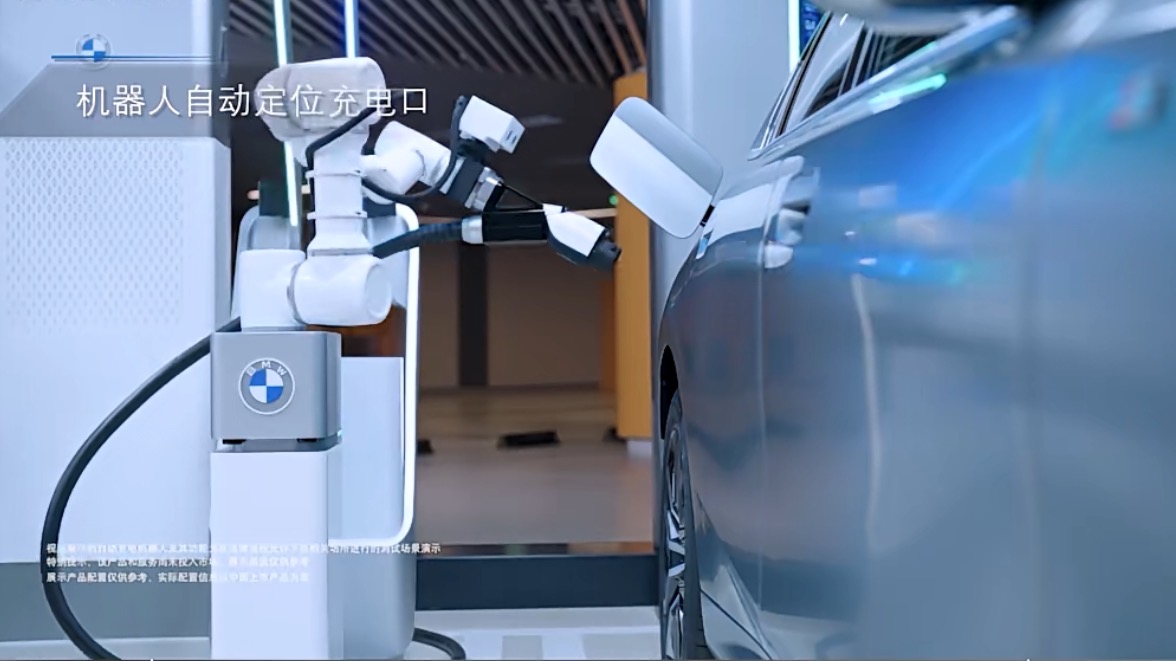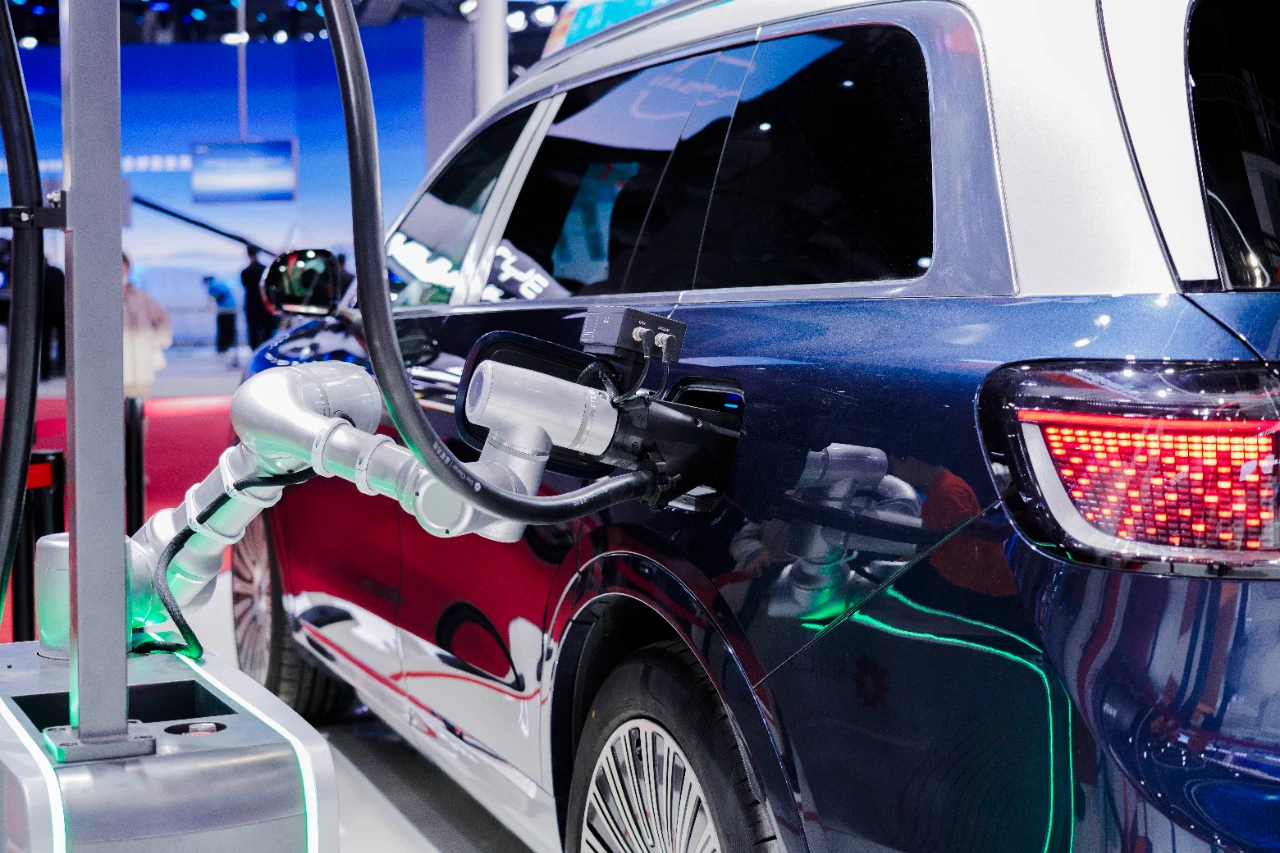Recently, BMW Group released a demonstration video of its automated charging robot, drawing the industry's attention back to automated charging. With the popularization of new energy vehicles, charging technology has become a focal point for both the automotive and energy sectors. Behind automated charging lies the future of intelligent charging, turning into reality. As intelligent vehicles freely navigate, achieving 'fully automated charging' has been a significant challenge for the industry, and automated charging is seen as the final piece of the puzzle for intelligent driving. Reports indicate that companies such as BMW, Zeekr, and Huawei are entering this space, with charging industry firms like State Grid, Star Charge, and Zhida Technology already making relevant deployments. Industry insiders believe that 2025 will mark the rapid application of charging robots. BMW's video showcases how the automated charging robot alleviates charging anxiety. When a vehicle parks in an automated charging space, the robot accurately locates the charging port, plans the path, connects the charger, and begins charging. Once charging is complete, it automatically disconnects and returns to its position. The entire process from activation to connecting the charger takes only a few seconds. Coupled with BMW’s features like reservation charging, automatic locking, and plug-and-charge, it eliminates the need for users to scan, connect, or settle payments, achieving a fully automated charging experience without user intervention, thus providing a smarter, more comfortable, and safer charging experience. Many consumers have praised this initiative, expressing sentiments like 'technology is changing the future of BMW users' lives' and 'with the automated charging robot, it feels liberating.' BMW's automated charging robot has completed concept validation and will be applied based on future market conditions. Using AI, automated charging can be completed without user intervention. Apart from BMW, companies like Zeekr and Huawei have also entered this field, and charging robots are expected to gradually change public life. In January, a video released by Huawei showed the intelligent driving system of the Zunjie S800 guiding the vehicle to park automatically, followed by a charging robot completing the connection. As early as 2024, Zeekr 001 released a video showcasing the interaction between automated parking technology and automated charging robots. For automakers, deploying automated charging robots serves several purposes: solving charging challenges, aligning with the trend of automotive intelligence, expanding business areas and profit points, and enhancing brand image and competitiveness. It is evident that automated charging robots are not only a technical breakthrough but also an industrial revolution, reshaping the interaction between people, vehicles, and charging stations. As the trend of intelligence progresses, the charging industry is already preparing for deployment. Currently, new energy vehicles equipped with advanced driving assistance features are rapidly penetrating the mainstream market. According to IDC data, by 2024, the penetration rate of new cars meeting L2 standards in China is expected to rise from 52.1% in 2023 to 59.7%, with nearly 70% of new mid-to-high-end models priced over 100,000 yuan meeting this standard. In the context of continuous evolution towards intelligence, smart charging is also accelerating breakthroughs in technological boundaries. In various scenarios such as highway service areas, unmanned parking lots, and smart communities, the full automation of driving, parking, and energy replenishment is gradually being realized: upon arrival, the vehicle autonomously plans a path to the charging area, completes parking with high-precision positioning systems, and performs the entire process of automatic connector plug/unplugging, status monitoring, and safety protection, indicating the initial formation of a new ecosystem where automated driving and unmanned charging deeply integrate. In addition to automakers, the charging industry has achieved significant results regarding automated charging robots. At this year's Shanghai Auto Show, Star Charge officially launched the 'Armstrong Fully Automated Mechanical Arm Charging System.' Subsequently, on May 20, Zhida Technology released the world's next-generation serpentine automated charging robot—Ling Snake SmartLink. It is reported that the innovative serpentine flexible arm utilizes a rope-driven structure, making it a world first, with outstanding advantages such as low cost, strong environmental adaptability, precise plug/unplug operation, and safety. Ling Snake SmartLink is the sixth-generation product of Zhida's serpentine flexible arm automated charging robot. Currently, Zhida Technology, through its self-developed automated charging robots, has signaled its entry into the Middle East market, becoming the first technology company to achieve a full chain landing of automated charging hardware and system solutions in the region. Moreover, as the automation level of electric vehicles increases, commercial vehicles capable of automated driving in closed scenarios, as well as passenger cars with automatic parking capabilities, are being widely applied in certain areas. Automated charging robot products suitable for these scenarios are also maturing. In June of this year, the 'Electric Vehicle Bottom Contact Automatic Charging System Part 1: General Requirements' group standard, led by the China Electric Power Enterprises Association and State Grid, has begun compilation, marking a milestone event in promoting the standardization development of intelligent energy replenishment systems.
BMW Unveils Automated Charging Robot Demonstration Video

Images


Share this post on: